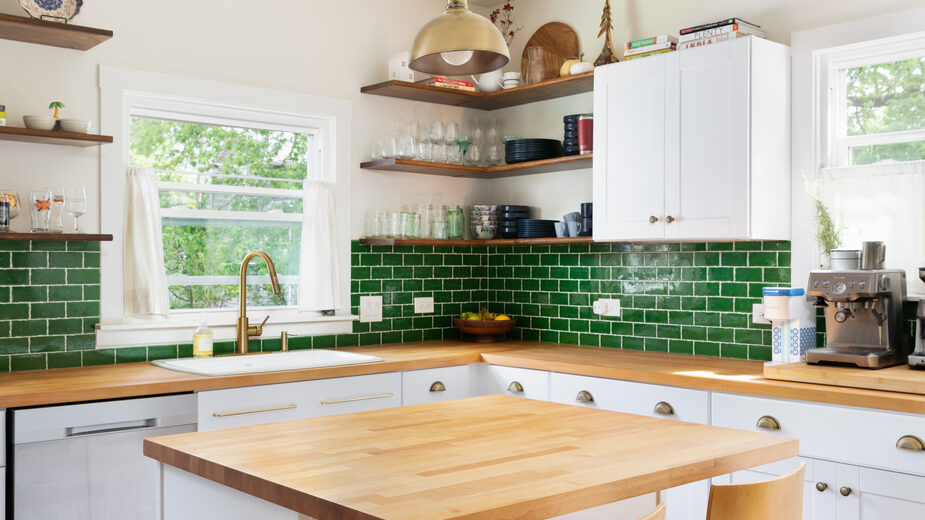
The Backer board needs to be put in places where you will put interior tiles that will come in direct contact with water. Use a special backer board that is waterproof in places where the tile will be directly exposed to water or rain.
If your tile won’t be directly hit by a spray of water, you don’t need a special backer board. Use a real cement backer board or something like this shower backer board kit.
The Backer board is usually made of cement board, but several brands make great waterproof backer boards for showers. You have to take down the wall to the studs and then put your waterproof backer board right on the studs. Behind the tile in your shower, you must use a cement board or another waterproof board.
Does my kitchen backsplash need a backer board?
Only walls and floors that will be directly exposed to running water, like in a shower, need a waterproof tile backing board. A tile backsplash can be put up over regular drywall in your kitchen.
Since sinks aren’t wet areas like showers, which need backer board, a tile backsplash in the kitchen can be put on clean, level drywall. You can put a ceramic tile kitchen backsplash right on top of drywall or plaster as long as the wall is smooth and flat.
One way to fix this is to first cover it with a layer of Kilz or another flat-sealing primer. This will stick to the board and give the tile a good place to stick.
Choose the right tile adhesive for your tiles. For ceramic tiles, use a ready-mixed or powder tile adhesive, and for porcelain tiles, use a powder tile adhesive. Attach a straight board to the level line with screws, and then stack the tiles on the board.
What to do and what not to do when installing a subway tile backsplash for the first time
Here is a list of what to do and what not to do when installing a backsplash of subway tiles.
- Do: Find out more about subway tile kitchens. If this is the first time you’re working with tiles or doing a project of this size, take the time to learn as much as you can before you start.
- Choose a mosaic tile for your subway tile kitchen. We love the way real subway tile looks, but we were worried that putting each tile in one by one would give us more chances to mess up.
- Backsplash Made of White Subway Tiles Don’t: Pick a grout color that stands out. We chose a grout color that was almost as dark as the black kitchen appliances to go with the white subway tiles.
- Backsplash Made of White Subway Tiles Doesn’t think that you can just fill the hole with grout. Our kitchen is pretty big, so it didn’t take long for us to get tired of having to cut things perfectly.
- Backsplash Made of White Subway Tiles Don’t: Draw caulk lines by hand Once the tiles and grout are in place, you will need to caulk the edges to match.
- Backsplash Made of White Subway Tiles Don’t: Throw trash into the kitchen sink Don’t wash your buckets in the sink. This might seem like a no-brainer.
How to Prepare for Tile and Choose a Pattern for Your Kitchen Backsplash
We had always planned to do some kind of tile backsplash. This, along with the fact that the walls were very uneven, made it clear that we needed to install a backer board as the next step.
If your wall is straight and doesn’t have any major ridges or problems, you don’t always need a backer board for a tile backsplash. Often, you can just put this set on the wall and put the tiles in place.
You usually do this because if the board bends, the tile or grout will break, and your installation will fail. More specifically, she was making plans for how she wanted the tile backsplash to look in the end.
“While I was in the basement, Wendy did her research on how to lay out the tiles. The main thing that worried us was how hard it would be to arrange everything in the space we had. As I said, there were only about 18 of us “to work with for the backsplash tile area. We just need to let the backer board joints dry overnight, and then we can start putting in tiles.
What do you think of our choice to use the larger, more traditional subway tiles in running bond? Do you have any tips you’d like to share for putting in tiles?
